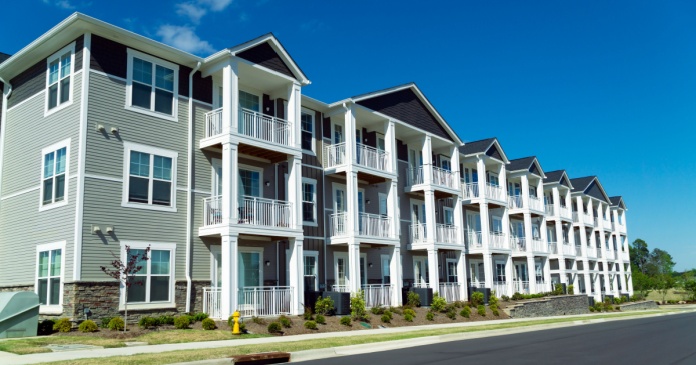Coming down the pike, on the federal, state and local levels in cities around the country, is legislation that will require multifamily owners to benchmark, rate and disclose their properties’ utility usage. Some bills have been introduced and passed, others will languish and be reintroduced and still others will go nowhere. But they indicate the need to establish practical benchmarks that provide a frame of reference for apartment owners to compare their properties’ utility consumption to similar properties in their own portfolios, or like properties across regions, states, cities and sub-markets.
Seattle, New York City and Austin have mandated such measures for multifamily that will become effective in 2011. Seattle passed a first-of-its-kind ordinance last year that requires annual energy performance rating and disclosure in all multifamily buildings with five or more units. That law requires that apartment owners benchmark their properties’ energy performance, using the EPA’s Energy Star Portfolio Manager or a similar, yet-to-be-specified tool, and report performance to the city annually and disclose that information to current and prospective residents, potential buyers and lenders, upon request.
According to Michael Foote, regulatory and general counsel for NWP Services Corporation, a national provider of resident billing, electronic rent payment and utility management services, Seattle’s disclosure mandates for now are tied to points of sale, but eventually will extend to point-of-lease.
“They will provide another piece of information renters can go to and judge where they want to live. But both circumstances are important. Today, a potential purchaser of a property, who wants to know how efficient it is, must rely on inspection of the infrastructure and some anecdotal evidence and look at the master meter utility bills and the properties’ utility bills and try and gauge efficiency on a per-square-foot basis, but that’s not the best comparison. Taking all of the information together and trying to get it into a number from one to 100 will be far more useful,” said Foote.
Seattle’s ordinance targeted commercial buildings first, since the EPA’s ten-year-old Portfolio Manager bench-marking tool was originally designed to work specifically with commercial properties.
Seattle’s legislation follows the mandates of other cities, yet is unique both in its broad applicability to all multifamily buildings and the breadth of disclosure requirements compared to similar laws in New York City and Washington, D.C., says the National Multi Housing Council (NMHC). To better understand the implementation needs of the multifamily sector, Seattle has launched a pilot program that NMHC expects will be replicated in other jurisdictions.
New York City’s bench-marking program for commercial properties ties to sales and requires energy rating and disclosure, periodic energy audits and lighting upgrades.
“NYC is an interesting jurisdiction to look at because it has very active tenants’ groups and savvy multifamily residents that have become attuned to being billed separately for utilities in lieu of direct utility billing through their rent,” said Foote. He notes that one piece of legislation this year was introduced by a tenants’ group prohibiting multifamily owners from billing separately for heating and cooling costs, unless they upgraded all of their systems.
“That was an interesting way for the tenants to try and get owners to upgrade, and their thinking was, when a tenant is billed separately, the owner is disincentivized to upgrade their systems, because they are externalizing those costs. But the legislature told the tenants their bill was the wrong way to go about mandating upgrades. They said, ‘If you want to mandate these things, you should do it in a bill that says buildings must meet certain energy standards instead of prohibiting what is otherwise a fair practice for owners that do have good systems.’ The legislature painted the tenant’s bill as throwing the baby out with the bath water, if you paint everyone with the same brush,” said Foote.
California has proposed a mandatory bench-marking bill that would require commercial building owners to disclose bench-marking data to prospective tenants, buyers and lenders. The mandate is not tied to a specific tool, nor does it specify how to perform the bench-marking. But, for now, most property owners are using the EPA’s tool, because it is to only tool available to them, said Foote.
While California deals with a pressing current budget crisis, the bill is on the back burner, but Foote believes that, when it is picked up again, it will be expanded to include multifamily in order to help meet state-wide reductions in energy consumption mandated by 2020.
Austin’s ordinance, passed in 2008, requires energy rating and disclosure of commercial buildings and single-family homes and mandatory energy audits for multifamily buildings. The law further mandates retrofitting buildings for electric, heating and cooling if they perform badly in the audit.
Foote points out that the onus to benchmark and disclose is on the seller, but as much as it seems like a burden and a challenge, it’s also an opportunity. Armed with comparison information, owners who are pushing green initiatives or green buildings can differentiate themselves from the competition.
On the other hand, he says, those who will be hurt are owners with aging systems who want to sell their properties. “They no longer will be able to hide their performance behind fuzzy disclosures and square-footage comparisons that could be misleading depending on when the property was constructed and what sort of energy and heating and cooling systems they have,” he said.
Also in 2008, Washington D.C. mandated annual energy performance rating and disclosure for commercial buildings. Although it’s law isn’t tied to a transaction, energy performance data is published in an online data base.
Meanwhile, the federal government has proposed legislation of its own—the American Clean Energy & Security Act—that, as of the end of 2009, was still being reconciled. The act that mandates for greater efficiency in both commercial and residential construction only ties to specific kinds of federal projects.
“What is anticipated is that buildings that meet the national building code and the energy efficiency target will get a 30 percent reduction in energy use, relative to the baseline. They have set targets in 2014 for residential and 2015 for commercial and, beyond that, will shoot for getting a 50 percent reduction against baseline. And, in each three-year period after those two time periods, an additional five percent reduction target will be added until 2029 and 2030, respectively, for residential and commercial buildings,” said Foote.
Like the federal government, Arkansas and Wisconsin have proposed bills that set standards for energy and environmental design for state buildings and structures and school district facilities and other local government buildings, with the intent of expanding the law to include commercial and multifamily.
Maine introduced a bill in 2009 that provides an income tax reduction if an owner demonstrates to the public utilities commission that they have done an energy audit. Each deduction is capped at the cost of the audit, or $750, whichever is less
“Legislatures on the local, state and federal level realize the value of compiling this information and giving a numeric value to efficiency at properties. And legislatures are copycats. Some are fast adopters and some like to let it play out for a year or two or maybe longer. But they shouldn’t take too long, because adoption is spreading across our land. The trend is that we foresee these bills being introduced in more states in the coming years, so there is something coming down the pike forever,” he said.
Author Wendy Broffman














